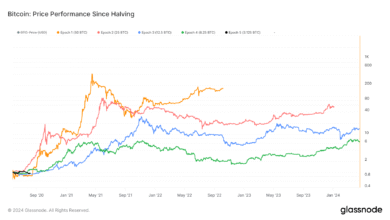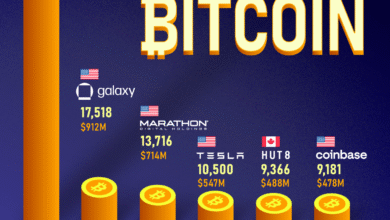Crypto Adoption in Latin America: Brazil and Argentina Updates

In recent years, crypto adoption in Latin America has rapidly gained momentum, emerging as a pivotal force in reshaping the financial landscape. Countries like Brazil are exploring the implications of a bitcoin reserve strategy, while Argentina is taking significant strides with tokenization initiatives tailored to modernize its economy. Buenos Aires has even embraced crypto payments, allowing residents to settle municipal taxes in digital currencies. As Latin America continues to navigate the evolving digital assets space, the latest Latam crypto news showcases the region’s innovative approaches toward cryptocurrencies. With a growing interest in digital assets in Latin America, these developments signify a fundamental shift in how citizens engage with their finances.
The rise of cryptocurrency utilization in Latin America is indicative of a broader trend towards digital transformation in the region. As nations like Brazil debate their financial strategies concerning bitcoin, initiatives like Argentina’s tokenization reflect a broader acceptance and integration of decentralized technologies into established frameworks. Notably, cities such as Buenos Aires are leading the charge by incorporating crypto payment systems into everyday transactions, underscoring a local appetite for digital currencies. This evolving landscape of financial innovation highlights the increasing importance of digital assets in redefining economic interactions across Latin America. As developments continue to unfold, the region stands at the forefront of a global shift in how financial systems operate.
Brazil’s Bitcoin Reserve Controversy
The Central Bank of Brazil’s dismissive stance on a Strategic Bitcoin Reserve raises crucial questions about the future of cryptocurrency integration within the country’s financial framework. During a recent congressional hearing, officials debated the implications of adopting Bitcoin as a reserve asset, with significant resistance highlighted by the Brazilian Central Bank’s representatives. As noted, Bitcoin’s classification by the International Monetary Fund (IMF) as a non-financial asset limits its suitability for backup reserves, echoing concerns that have stunted crypto adoption in various sectors.
Supporters of Bitcoin argue that as a decentralized digital asset, it could offer a hedge against inflation and bolster Brazil’s economic resilience. However, the central bank’s stance reiterates a cautious approach among traditional financial institutions in Latin America, reflecting a broader attitude across the region. This debate not only affects Brazil’s fiscal policies but also reverberates through other Latam countries re-evaluating their stance on cryptocurrencies.
Argentina’s Progressive Tokenization Strategy
Argentina is taking significant strides in the world of digital finance with its latest developments in tokenization. Following the enactment of General Resolution 1081 by its securities watchdog, the National Securities Commission (CNV), Argentina is poised to lead in the application of decentralized technologies within financial markets. The resolution permits stocks and other securities to be issued as digital tokens, marking a pivotal shift toward embracing blockchain technology in securities trading.
This move has placed Argentina at the forefront of innovation within the region, promoting financial inclusivity and transparency. By allowing both national and foreign stocks to transition into tokenized formats, Argentina not only simplifies ownership transfer but also enhances investment opportunities across a broader demographic. As a result, the nation is quietly garnering attention within the wider crypto community, which is keen on monitoring the successes and challenges of Argentina’s regulatory changes.
The Surge of Crypto Payments in Buenos Aires
Buenos Aires is emerging as a leader in the crypto adoption landscape, driven by a growing number of residents willing to engage in digital currencies. The city recently unveiled its BA Crypto program, designed to enable residents to pay municipal taxes using cryptocurrencies. This initiative reflects a significant shift towards integrating digital assets into everyday financial transactions, highlighting Buenos Aires as a hub for crypto innovation.
With over 10,000 local residents opting for cryptocurrency payments, this trend reflects a strong acceptance and demand for digital currency solutions. The introduction of a QR-based payment system emphasizes Buenos Aires’ commitment to leveraging technology for municipal operations. As crypto payments gain traction, Buenos Aires sets a precedent that could influence other municipalities across the region, paving the way for wider acceptance and regulatory frameworks in the Argentine financial sector.
Crypto Adoption in Latin America: Trends and Challenges
The momentum for cryptocurrency adoption in Latin America is palpable, yet it is met with a series of unique challenges. Various countries, including Brazil and Argentina, are approaching crypto integration from different angles, whether by resisting Bitcoin as a reserve asset or embracing tokenization for securities. Despite regulatory hurdles, the enthusiasm for digital assets is evident, as indicated by initiatives like Buenos Aires’ BA Crypto.
The diversity in governmental policies reflects a patchwork approach that can create barriers to entry and slow down widespread adoption. However, as more citizens become aware of the advantages of cryptocurrencies, including decentralized finance and the potential for financial sovereignty, there is hope for a more unified movement toward embracing digital assets. The Bolivia and Mexico crypto news circuits are also beginning to show increased interest, signaling a possible shift in policies that could facilitate broader adoption in the future.
The Role of Digital Assets in Economic Recovery
In the wake of economic challenges exacerbated by various factors, the potential role of digital assets in fostering recovery in Latin America has come into discussion. Cryptocurrencies and blockchain technologies present opportunities for enhanced transparency, reduced transaction costs, and access to global finance that many traditional financial institutions fail to provide. Countries actively exploring crypto regulations, like Argentina and Brazil, illustrate that digital assets could be pivotal in revitalizing local economies.
By adopting comprehensive frameworks for cryptocurrencies, Latin American countries can attract foreign investment, harness innovative financial solutions, and ultimately drive economic growth. The path is fraught with challenges, such as regulatory uncertainties and public skepticism, yet countries engaging meaningfully with digital assets demonstrate a proactive approach that could set the stage for long-term financial benefits.
Staying Ahead of Latam Crypto News
For anyone interested in the evolving landscape of cryptocurrencies in Latin America, keeping abreast of local developments is essential. The latest crypto news from Latam provides insights into how various nations are responding to the rise of digital currencies. By following developments in Brazil, Argentina, and other regional markets, stakeholders can better understand the direction of crypto policy and consumer sentiment.
Various media channels and forums focusing on Latam crypto news are dedicating attention to new trends, regulatory changes, and innovations in financial technology. Staying informed not only equips investors and entrepreneurs with the knowledge needed to navigate challenges but also provides a clearer picture of emerging trends that could shape the future of digital assets in this vibrant region.
Impact of Regulatory Changes on Crypto Markets
Regulatory changes play a significant role in determining the future of cryptocurrency markets across Latin America. Governments’ varying responses to digital currencies create a complex environment where innovation can either thrive or be stifled. Brazil’s hesitance towards Bitcoin as a reserve and Argentina’s progressive stance on tokenization highlight the juxtaposition of policies affecting market dynamics.
As regulatory frameworks evolve, they have the potential to foster or impede growth in crypto markets. Countries introducing supportive legislation, like Argentina, are likely to attract crypto businesses and investment, while those with restrictive approaches may see stagnant market activity. This continual balancing act between innovation and regulation will define the trajectory of cryptocurrency across the region.
The Rise of Decentralized Finance in Latam
Decentralized Finance (DeFi) is becoming a formidable presence in the Latin American financial landscape, providing alternatives to traditional banking systems. With governments like Argentina enabling tokenization and embracing blockchain, the groundwork for DeFi infrastructure is being laid. This shift may empower more individuals by offering them access to financial services that transcend geographical and economic barriers.
The rise of DeFi also comes with additional risks, including regulatory scrutiny and market volatility. However, as awareness and education regarding decentralized technologies increase, Latam countries are beginning to explore the synergy between traditional finance and DeFi. The creativity and entrepreneurial spirit prevalent in the region could catalyze innovative solutions that redefine financial paradigms in the near future.
The Future of Cryptocurrency Branding in Latin America
As cryptocurrency continues to carve out a niche within the economic frameworks of Latin America, branding will play a crucial role in its acceptance and growth. A well-defined cryptocurrency identity can help mitigate public skepticism and encourage adoption. Educational and branding initiatives aimed at explaining the benefits of digital assets can pivot the perception of cryptocurrencies – from speculative assets to valuable financial instruments.
Incorporating elements that resonate with local cultures and values into crypto branding campaigns can enhance their effectiveness. Not only does this foster a sense of community around digital assets, but it also addresses the unique economic realities faced by Latin Americans. The success of such campaigns will ultimately influence the trajectory of cryptocurrency adoption and market growth in the region.
Frequently Asked Questions
What is the Brazilian Central Bank’s stance on Bitcoin as a reserve asset for its crypto adoption in Latin America?
The Brazilian Central Bank has dismissed the idea of adopting a strategic Bitcoin reserve, stating that Bitcoin does not meet the criteria to qualify as a reserve asset. This approach reflects the bank’s view regarding crypto adoption in Latin America, which prioritizes traditional asset classifications.
How is Argentina leading in tokenization for crypto adoption in Latin America?
Argentina has recently initiated stock tokenization under a regulatory sandbox, allowing for the issuance and trading of national and foreign stocks as tokens. This move is part of Argentina’s efforts to enhance crypto adoption in Latin America by integrating decentralized technologies into securities trading.
What initiatives has Buenos Aires implemented to promote crypto payments and adoption?
Buenos Aires has launched the BA Crypto program, enabling residents to pay municipal taxes and fees using cryptocurrency. This initiative highlights the growing trend of crypto adoption in Latin America, aiming to facilitate transactions for over 10,000 residents already receiving cryptocurrency payments.
Why did Brazil’s Central Bank reject the proposal for a strategic Bitcoin reserve?
The Central Bank of Brazil rejected the strategic Bitcoin reserve proposal during discussions on Bill 4501/2024, citing that Bitcoin is classified by the IMF as a non-financial asset. This classification impacts its acceptance as a reserve asset, showcasing the cautious approach towards crypto adoption in Latin America.
What does the new tokenization regime in Argentina signify for digital assets in Latin America?
The new tokenization regime in Argentina signifies a significant step in embracing digital assets in Latin America, allowing for the legal issuance, liquidation, and trading of securities using decentralized technologies. This regulatory support is expected to boost crypto adoption and innovation within the region.
How does Buenos Aires’ crypto payment system work for local residents?
The Buenos Aires crypto payment system allows residents to use cryptocurrencies for various municipal payments, including taxes and traffic fines, through a QR-based payment platform that connects to local wallets. This initiative is part of Buenos Aires’ broader strategy to enhance crypto adoption in Latin America.
What impacts could Argentina’s tokenization efforts have on other countries in Latin America?
Argentina’s focus on tokenization could serve as a model for other countries in Latin America to explore similar regulatory frameworks and adopt digital assets, potentially leading to increased crypto adoption across the region.
| Topic | Details |
|---|---|
| Central Bank of Brazil’s Stance | The Central Bank dismisses the idea of implementing a Bitcoin reserve strategy, arguing it does not meet asset requirements. |
| Legislative Action | Bill 4501/2024 is being debated, which would allow purchase of up to 5% of foreign reserves in Bitcoin. However, Bitcoin is classified as a non-financial asset. |
| Argentina’s Tokenization Initiatives | The CNV passed a regulation to enable national and foreign stocks to be tokenized under a regulatory sandbox framework. |
| Buenos Aires Crypto Payments | Buenos Aires is adopting a crypto payment system for municipal tax fees, with plans for a universal payment system. |
Summary
Crypto adoption in Latin America is gaining momentum as seen in Brazil and Argentina. While Brazil’s Central Bank rejects the implementation of a Bitcoin reserve strategy, Argentina is actively pioneering a tokenization regime and embracing cryptocurrency for municipal payments. This divergence highlights the varying approaches toward cryptocurrency across the region, suggesting a complex yet rapidly evolving landscape for digital assets in Latin America.




